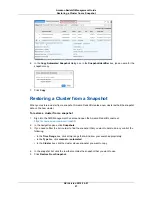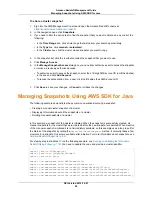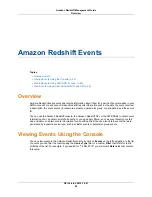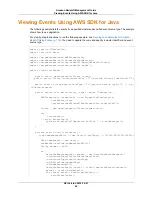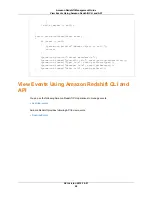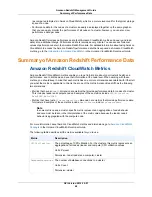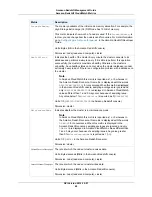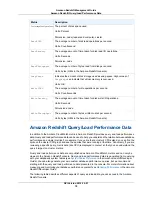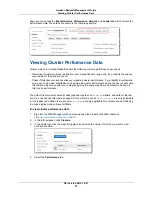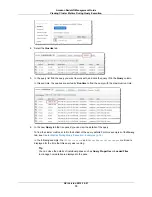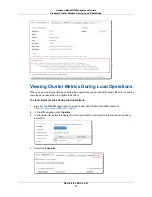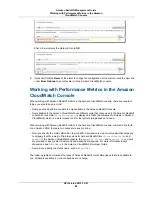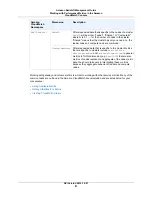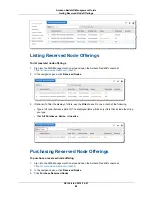
Description
Metric
The percent of disk space used.
Units: Percent
Dimension: node (leader and compute), cluster
PercentageDiskSpaceUsed
The average number of disk read operations per second.
Units: Count/second
ReadIOPS
The average amount of time taken for disk read I/O operations.
Units: Seconds
Dimension: node
ReadLatency
The average number of bytes read from disk per second.
Units: bytes (GB/s in the Amazon Redshift console)
ReadThroughput
Indicates the amount of disk storage used as swap space. High values of
SwapUsage
can indicate that virtual memory is over-used.
Units: GB
SwapUsage
The average number of write operations per second.
Units: Count/seconds
WriteIOPS
The average amount of time taken for disk write I/O operations.
Units: Seconds
Dimensions: node
WriteLatency
The average number of bytes written to disk per second.
Units: bytes (GB/s in the Amazon Redshift console)
WriteThroughput
Amazon Redshift Query/Load Performance Data
In addition to the Amazon CloudWatch metrics, Amazon Redshift provides query and load performance
data. Query and load performance data can be used to help you understand the relation between database
performance and cluster metrics. For example, if you notice that a cluster's CPU spiked, you can find the
spike on the cluster CPU graph and see the queries that were running at that time. Conversely, if you are
reviewing a specific query, metric data (like CPU) is displayed in context so that you can understand the
query's impact on cluster metrics.
Query and load performance data are not published as Amazon CloudWatch metrics and can only be
viewed in the Amazon Redshift console. Query and load performance data are generated from querying
with your database's system tables (see
System Tables Reference
in the Amazon Redshift Developer
Guide). You can also generate your own custom database performance queries, but we recommend
starting with the query and load performance data presented in the console. For more information about
measuring and monitoring your database performance yourself, see
Managing Performance
in the Amazon
Redshift Developer Guide
The following table describes different aspects of query and load data you can access in the Amazon
Redshift console.
API Version 2012-12-01
70
Amazon Redshift Management Guide
Amazon Redshift Query/Load Performance Data


